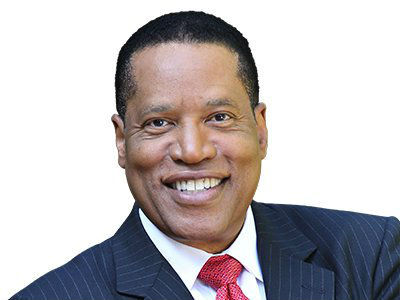What your digital trail reveals about you
Lifestyle

Audio By Carbonatix
9:30 AM on Friday, October 24
By Shawn Tyler for PeopleFinders, Stacker
What your digital trail reveals about you
Every time you post a photo, tag your location, or sign up for a new account online, you’re leaving behind a trail of digital breadcrumbs. Individually, they may seem harmless—a restaurant check-in here, a LinkedIn update there—but together, they can form a surprisingly detailed picture of your life.
This ongoing stream of data points, known as your digital trail, can reveal far more than you realize, PeopleFinders reports. From your favorite weekend spots to your professional network, your online habits can paint a vivid portrait for anyone who knows where to look—including advertisers, employers, and even scammers.
What Is a Digital Trail (and Why It Matters)
Your digital trail (sometimes called a “digital footprint”) is the record of your activity across the internet. It includes everything from your Instagram likes and online purchases to your search history and app permissions. Some parts of it are intentional, like when you post a photo or check in at a coffee shop. Others are passive, like when websites collect information about your browsing habits or location data in the background.
The key thing to understand is that your digital trail is cumulative. Each interaction may seem minor, but over time, these bits of data stack up. Someone piecing them together could learn your routines, interests, relationships, and even where you live or work.
That’s what makes awareness so important—not because you should panic or go offline entirely, but because understanding what’s visible helps you make smarter choices about what you share and where.
How Your Digital Trail Forms
Your digital trail doesn’t appear all at once; it builds slowly, through the small actions you take online every day. Here are some of the most common (and surprising) ways those breadcrumbs get dropped.
1. Social media posts and tags
Every time you share a photo, comment on a post, or tag a location, you’re adding to your digital story. Even old or private posts can surface through friends' tags or public comments that connect back to you.
2. Location sharing on apps
Navigation, weather, delivery, and even dating apps often track your location to personalize your experience. But in doing so, they record a surprisingly detailed map of your movements—sometimes even storing past locations long after you’ve closed the app.
3. Website cookies and trackers
When you accept cookies on a website, you’re allowing small files to follow your browsing behavior. These trackers can reveal what products you’re interested in, which sites you visit, and how long you stay on each page, all of which contribute to a data profile connected to you.
4. Online shopping and subscriptions
Signing up for newsletters, loyalty programs, or online accounts can share more than just your email. Many companies collect demographic details, purchase history, and even your payment information, which can later appear in marketing databases or public data sets.
5. Search history and browsing data
Your search history says a lot about you—your interests, plans, and even worries. While search engines don’t publicly post this data, it can still shape the content and ads you see online, and in some cases may be sold or analyzed by third parties.
6. Digital interactions with friends and family
Even if you’re careful about what you post, others may share content that includes you—tagging you in photos, listing you as a contact, or mentioning your name in a public post. Those connections can help outsiders link your online profiles together more easily than you might expect.
What Your Digital Trail Reveals About You
Your digital trail can say far more about you than you realize — even if you think your online activity is fairly private. When you combine your posts, likes, and logins, a detailed picture starts to form. Here’s what someone could piece together from those scattered data points:
- Your full name and aliases. Even a casual username might include part of your real name, initials, or other clues that link accounts together.
- Your location. Check-ins, tagged photos, and location-based apps can reveal where you live, work, or frequently visit—sometimes with surprising precision.
- Your contact information. Old profiles or data leaks might expose email addresses or phone numbers you’ve forgotten were public.
- Your relationships and social circle. Friend lists, comment threads, and shared photos show who you know, and how you’re connected.
- Your interests and habits. From your Spotify playlists to your recent Google searches, your likes and clicks reveal hobbies, routines, and even personal struggles.
- Your professional background. LinkedIn profiles, personal websites, and online resumes can paint a picture of your career, even if some details are outdated.
The more you interact online, the more complete this portrait becomes—and not all of it is under your control.
How to See What Your Digital Trail Looks Like
If you’ve ever wondered what someone could learn about you just by searching your name, you’re not alone. Fortunately, there are a few ways to see your online footprint for yourself.
1. Google yourself
Start with a simple search of your name in quotation marks (“Firstname Lastname”) to see what comes up. Try a few variations, like including your city or workplace, to get a more complete view.
2. Search social media platforms
Check Facebook, Instagram, LinkedIn, TikTok, and other platforms where you’ve had an account. Look at posts you’ve been tagged in, public photos, or pages that list your name. You may find things shared years ago that are still visible to anyone.
3. Review old accounts and profiles
Forgotten blog accounts, marketplace listings, or old email forums can linger online long after you’ve stopped using them. These are often overlooked but can still show up in searches.
4. Use a reverse name search tool
A people finder can reveal what information is connected to you in public records and online databases, including contact details, past addresses, and potential social media profiles. Running your own name using a reverse name lookup helps you understand what’s out there and what others might see if they looked you up.
Key Takeaways
Every click, post, and location tag leaves a trace—one that contributes to the larger story of who you are online. While most of this information is harmless and even helpful, it’s worth knowing how visible you really are.
By taking a few minutes to explore your digital trail—from Googling your name to checking what public data is connected to it—you can get a clearer sense of what the internet already knows about you. Awareness is the first step toward taking control of your digital presence.
This story was produced by PeopleFinders and reviewed and distributed by Stacker.

























